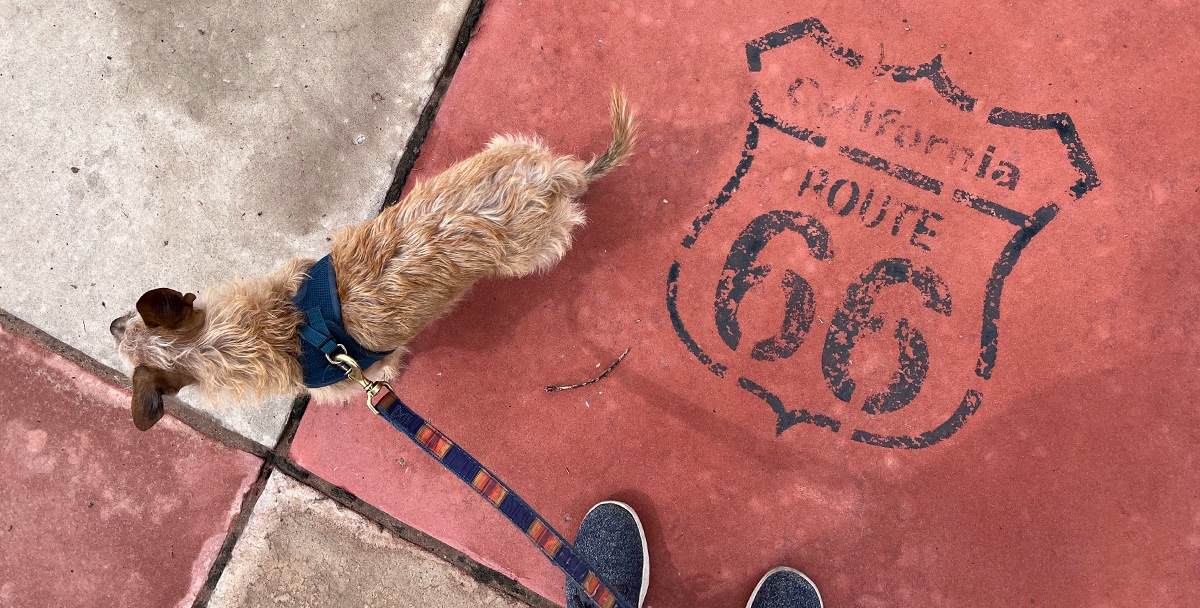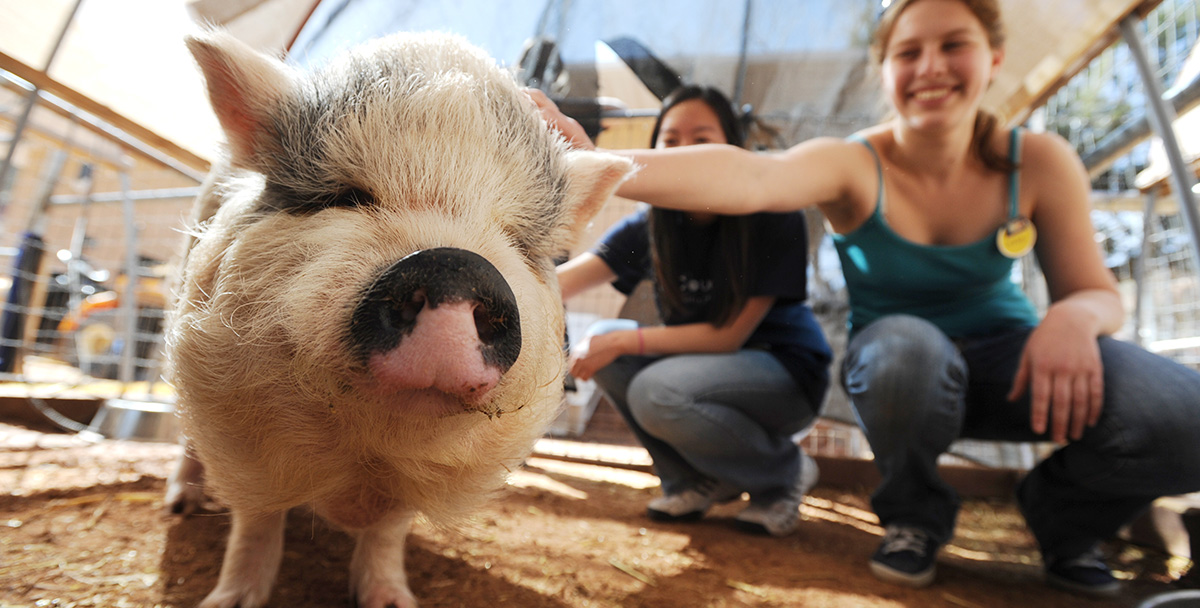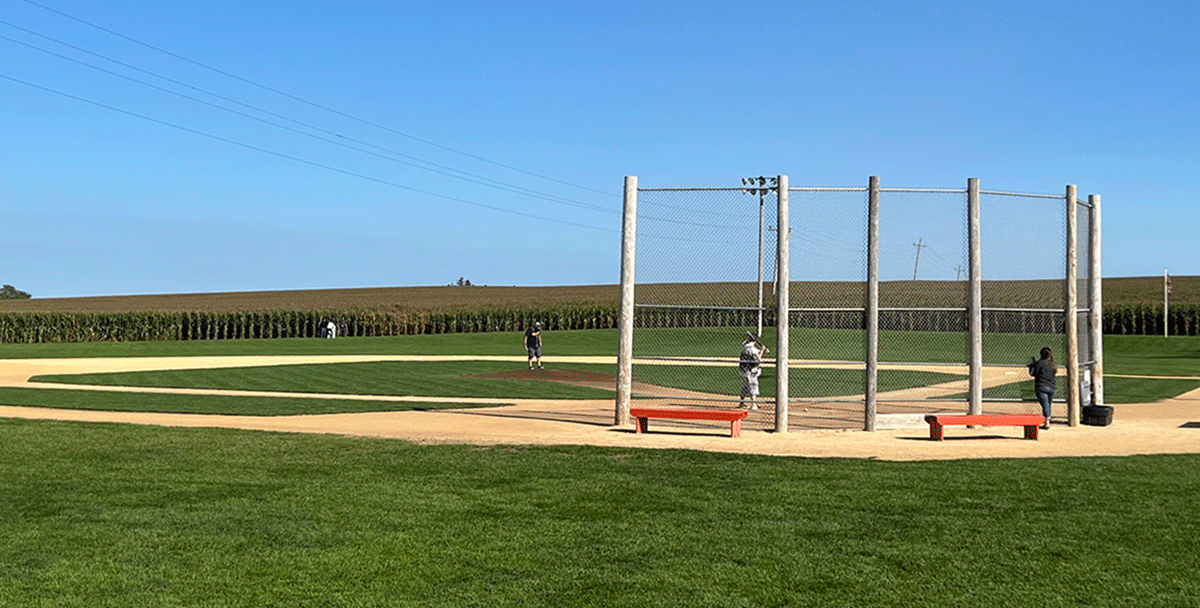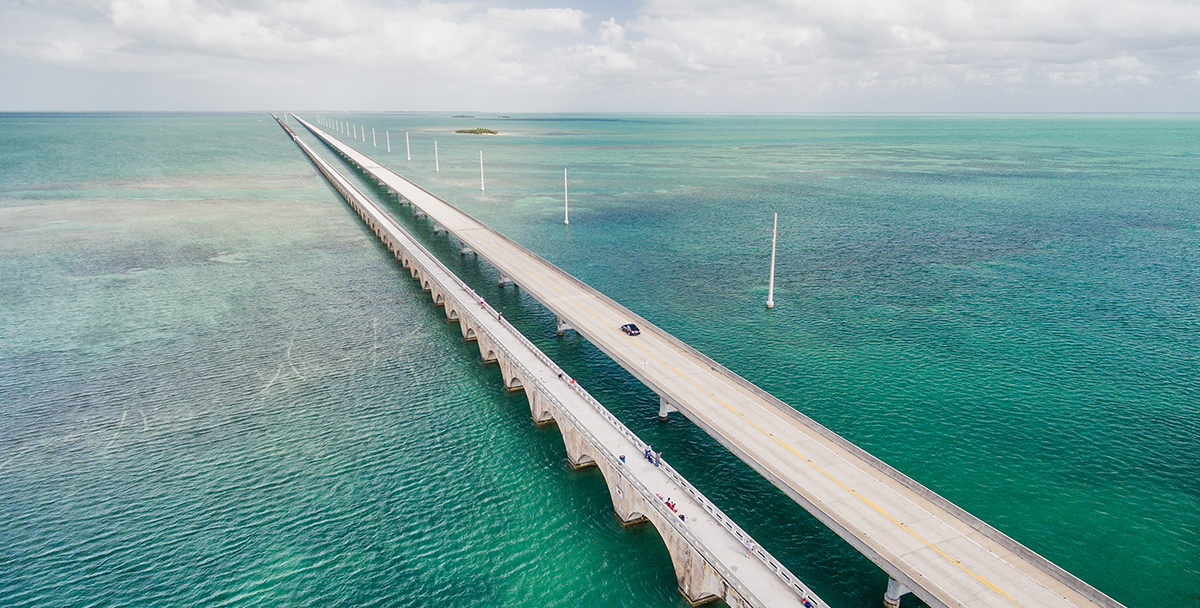One of the greatest attributes of a Subaru – featuring the legendary Subaru Symmetrical All-Wheel Drive (AWD) system – is that it can take you to a lot of places that another car just won’t. With increased ground clearance, protective skid plates underneath and modern technology, such as X-MODE® with Hill Descent Control and dual-function X-MODE with Hill Descent Control, a Subaru SUV is the perfect vehicular partner for all your adventures.
While swank resorts and roadside motels have their place, a lot of adventurers are choosing to go to sleep and wake up in the wilderness they planned so thoughtfully to get to. And the numbers of campers are growing, year over year.
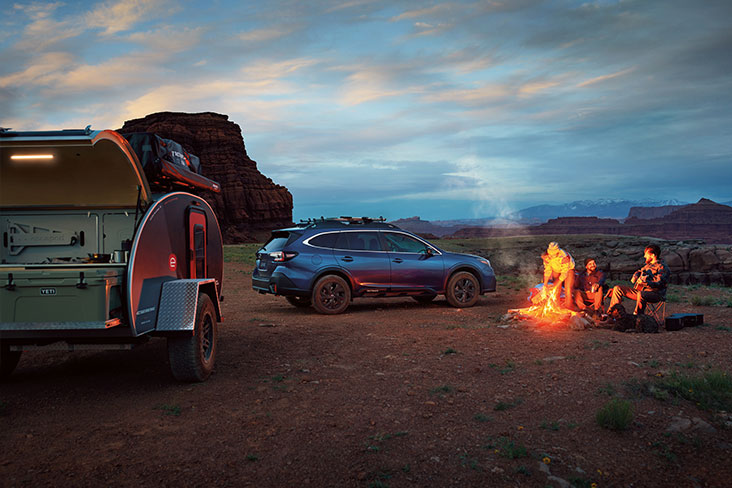
In 2019, Kampgrounds of America Inc. (KOA) released its fifth annual camping survey with findings that camping has exploded in popularity over the last half decade. An estimated 7 million new households have started camping since 2014, with about a million new households packing a tent in 2018 alone.
Here’s what the survey found about these new campers:
-
They’re adventuring closer to home: In 2014, around 13% of camping trips occurred within 50 miles of home. Five years later, that number had grown to 31%.
-
They’re camping more often: The number of campers heading out three or more times a year continues to grow. In fact, 50% of millennials suggested that life changes, such as having kids or getting a raise, allowed them to camp more frequently.
-
Outdoor recreation equals camping: Campers aren’t just sitting around the fire. They’re engaged in every form of outdoor adventure, from biking to hiking to kayaking.
-
They’re trying less traditional camping accommodations: Campers are straying from traditional tents to all forms of camping, including sleeping in their vehicles and rooftop camping.
-
New campers are more diverse than ever: For the first time in five years, campers from multicultural groups represented the majority of newcomers to the camping scene.
-
Overlanding continues to drive growth: 23% of younger campers stated that their interest is in an overlanding experience, traveling in an off-road vehicle that can take them to a destination with no services or amenities.
While the survey shows that traditional camping – in a tent, RV or travel trailer at a campground – still represents the biggest group of campers, the future of camping is pointing in the direction of those who want to push beyond the conventional campground farther into the wilderness, and they want to do it with the help of their vehicle.
Camping Without a Tent
Maslow’s Hierarchy of Needs suggests that, at the very base level, humans require “air, water, food, shelter, sleep, clothing [and] reproduction” for survival. Shelter, for our purposes, includes anything that can provide cover for a night spent in the wilderness.
In the most basic sense, that shelter can be whatever you’re wearing, a sleeping bag and as little as a small tarp in case of rain. One step closer to a tent is a bivy sack, which is kind of like a sleeping bag with a tent with mesh covering for your head and padding to make sleeping on the ground a bit more comfortable.
The main advantage of “cowboy camping” with a minimum of equipment is just that: the minimum of equipment. It’s extremely lightweight, and your entire camping setup can weigh less than a pound. This type of camping also allows you to camp in areas that would be too small for a traditional tent.
The disadvantages are obvious: With no equipment at all, you’re outside in the weather. That may be OK on the rare warm summer night with a minimum of bugs, but the second the weather turns inclement, it can become a problem.
Bivy sacks are a step better in terms of weather protection, but they have their own disadvantages. They’re small enough that they may trap the moisture from your breath overnight, leaving you damp in the morning. They’re also pretty tight inside and can be wildly uncomfortable if you struggle with claustrophobia.
Your Subaru can provide that extra measure of confidence for camping al fresco, though. If you’re camping without the luxury of a tent and the weather turns bad, your Subaru SUV can provide comfortable accommodations for two depending upon the model.
The Ascent, for example, allows for cargo loads of 82.5 inches – or 6.875 feet – with all of the seats lowered, enough to provide sleeping quarters for all but the tallest campers.
Like sleeping in a bivy sack, sleeping in your vehicle may result in uncomfortable moisture. To provide ventilation and fresh air inside the vehicle, aftermarket manufacturers, such as The Skeeter™ Beater, offer simple screens that affix to the window openings with magnets. The screens allow you to keep the front and rear windows open – or even the cargo hatch – without being attacked by mosquitos.
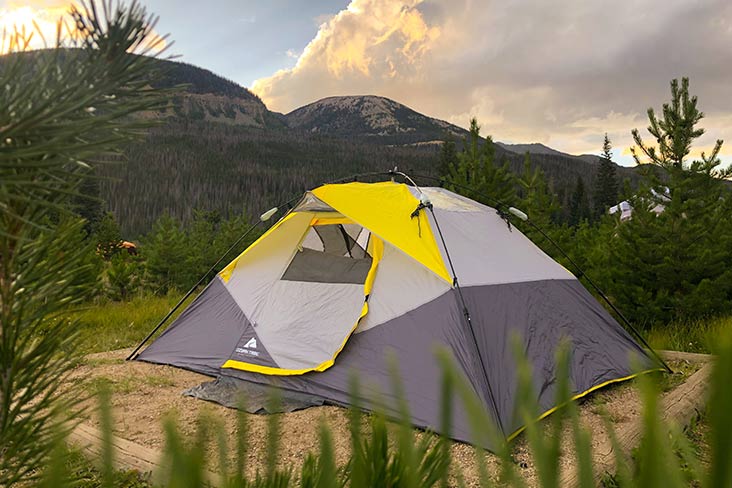
Traditional Tenting
Most people who camp (and we’re not including travel trailers or RVs with the word “camp”) are going to bring a tent. Tents offer significantly better protection than sleeping outside or using a bivy sack. They come in a range of different shapes, sizes and purposes.
Your choices for tents fall into several different categories:
-
Sleeping Capacity: Tent sleeping capacity is measured in the rather arbitrary measurement of “person.” If your person happens to be larger or smaller, these numbers aren’t going to tell you much, but it does give you an idea of how many humans could be reasonably comfortable spending a night inside.
-
Seasonality: Tents are typically broken into “three-season,” “three-four season” and “four-season” descriptions.
Three-season tents are lighter-weight shelters designed for spring, summer and early fall use. They typically have ample mesh panels behind zippered flaps that can boost airflow while keeping the bugs at bay. They also generally come with a rain fly that provides an extra measure of protection from the occasional downpour.
A three-four season tent – or an “extended season” tent – sacrifices airflow in favor of warmth with fewer and smaller mesh panels and heavier nylon materials.
Four-season tents are designed to withstand fierce winds and substantial snow loads. They’re heavier than either of the other two varieties and offer as little in the way of mesh panels as possible. Many are igloo shaped as a means of shedding snow.
-
Weight: We’re assuming you’re going to be camping near your Subaru, so weight is less of a concern, but if you’re planning on hiking and camping a decent distance from your vehicle, weight should be a consideration. You don’t want to be schlepping a six-person, 21-pound tent very far.
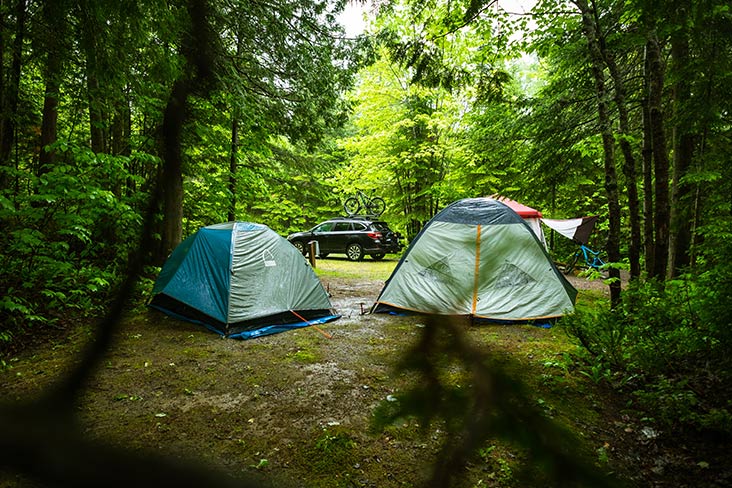
As you decide on your tent, there are several key features to keep in mind:
-
Peak Height: The taller the peak height, the more comfortable taller campers will be when moving around inside. Some of the taller tents – generally more “cabin” shaped – can offer a peak height of around 78 inches, enough to allow a 6-foot-2-inch camper to stand up to full height. Dome tents tend to have a shorter peak height but often are easier to set up thanks to hubbed pole sets.
-
Floor Length: If you’re 6 feet, 9 inches tall and the floor length of your tent is 72 inches, you’re going to have a bad time. Keep in mind that you also want some space for backpacks beyond the length of a sleeping bag and mattress pad.
-
Doors: Some tent designs offer multiple means of ingress and egress. That may sound like overkill, but you’ll appreciate it when your camping buddy can exit out their own door at 2 a.m. for an outhouse run.
-
Poles: Most tents available today are freestanding, meaning that they don’t have to be staked to be set up, so you can set it up and then move it to a more suitable location nearby.
In general, fewer poles equal easier setup. Most tents today have thin, flexible fiberglass poles connected with elastic cords. It makes them lightweight and easy to set up. Tents with hubbed pole sets have poles that are all connected to one main hub, meaning it’s impossible to leave one of the poles behind at a campsite.
-
Rain Fly: The rain fly is an additional cover that provides extra protection from the weather. It can also offer a bit more warmth, too, which is a good reason to leave it off on a hot summer night.
Rain flies come in two types: Roof only, which covers just the roof, and full coverage, which extends to the ground offering maximum protection from the wind and the rain.
-
Ventilation: Mesh panels are a double-edged sword. On the plus side, they provide much better airflow and visibility. On the debit side, the more – and larger – the mesh panels, the less protection in inclement weather.
-
Interior Accoutrements: When you’ve exhausted all the hard dimensions and general features of a tent, the decision can come down to whether one offers more zippered pockets or lantern loops inside than another.
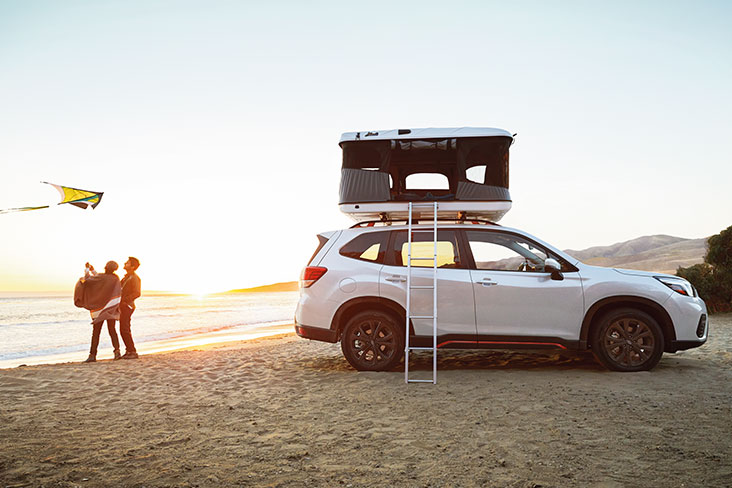
Rooftop Tenting
According to the KOA survey, rooftop and truck-bed tenting interest increased by 11% in 2018. That was on top of a 14% increase the year before. Companies have mastered the art of the rooftop tent, providing a structure that takes up no space inside the vehicle but has some significant advantages over a traditional tent.
Only a handful of manufacturers - most notably Thule Tepui - offer a quality rooftop tent that fits the specifications required to park your living quarters atop a Subaru.1
When shopping for a rooftop tent, you’ll be facing several of the same decisions as when purchasing a traditional tent (capacity, seasonality, floor length), but there are a few considerations specific to the rooftop tent:
-
Weight: This is key and requires that you understand the capacity of the roof rails of the vehicle to which you’re about to mount a tent. The Ascent, Crosstrek and Forester all have a roof rail capacity of 700 pounds when the vehicle is parked on a level surface. That means that the tent and the occupants inside it can’t weigh more than 700 pounds.
You should also be aware of the weight capacity of the roof rails when the vehicle is moving. At speed, all of the aforementioned Subaru models have a roof rail capacity of 176 pounds, meaning that the tent – when stowed and at speed – has to weigh less.
-
Ease of Set Up: One of the many benefits of rooftop camping – which you can learn about in our more extensive piece on rooftop tents – is that the setup can be a snap. Remove a nylon cover on the Tepui Explorer, for example, and the tent simply folds open like an accordion when you attach the ladder to the underside and pull half of the tent floor open.
-
Shell Type: Thule offers tents in two shell types: hard and soft. The soft-shell tents are less expensive and lighter, but the hard-shell Thule Basin just falls under the weight limit for most Subaru models. This particular tent is nice because it’s more aerodynamic than the soft-shell tents, and it also doubles as a rooftop carrier when you’re not using the tent.
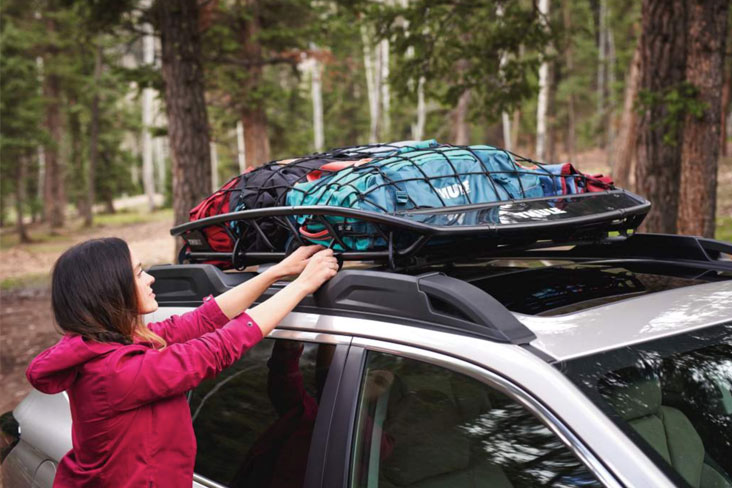
Choosing the Best Subaru for Your Camping Adventures
The more adventurous the locale, the more important it is that you have a vehicle that can act as a mobile base camp. Depending on the kind of camping you want to do, there are considerations to keep in mind when you’re choosing a vehicle.
Of course, if you wanted to, you could drive to some remote locations with a WRX or an Impreza, but for the purposes of this article, we’re going to focus on the Subaru SUV models that are more specifically suited to spending a weekend – or longer – off the beaten path.
Naturally, all these models feature 8.7 inches of ground clearance, standard AWD and a powerful SUBARU BOXER® engine, but there are a handful of other considerations when choosing a vehicle best suited for your off-highway adventure needs:
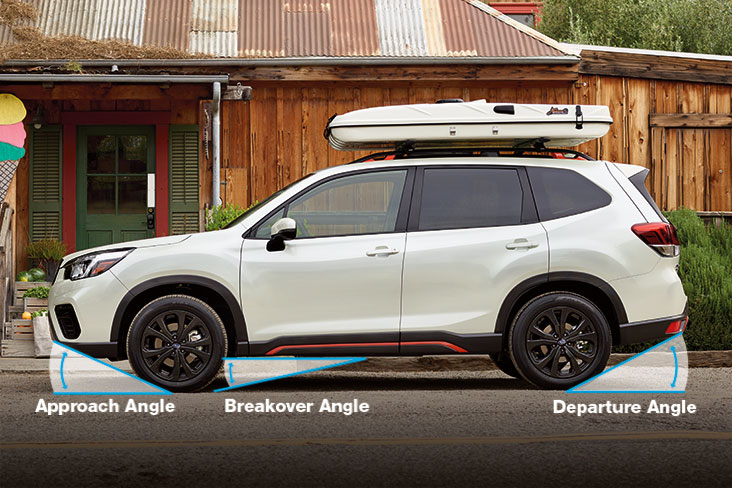
-
Approach Angle: The maximum angle of a ramp that a vehicle can climb without making contact between the ramp and the vehicle (usually the front bumper cover).
-
Departure Angle: The maximum angle of a ramp that a vehicle can exit without making contact between the ramp and the vehicle (usually the rear bumper cover, but possibly a receiver hitch).
-
Breakover Angle: The maximum angle that a vehicle can clear with the front and rear wheels on opposite sides of the angle.
-
Cargo Capacity: The maximum volume – in cubic feet – that a vehicle can stow in the cargo area. Typically, this is measured both with the rear seats in place and stowed.
-
Load Length: The maximum length of the cargo area with all the seats stowed.
-
Roof Rail Capacity: The maximum weight that a vehicle’s roof rails can support.
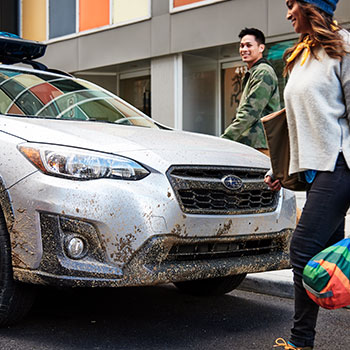
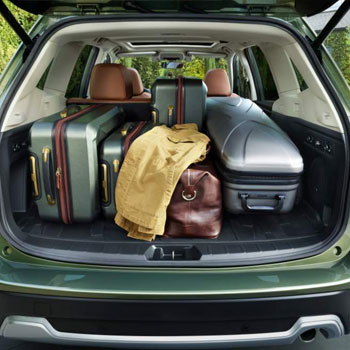
Subaru Crosstrek
With an 18-degree approach angle, a 29-degree departure angle and a 19.7-degree breakover angle, the Crosstrek has the goods to get you where you want to go. In the Limited trim, it also features standard X-MODE with Hill Descent Control, making it a surprisingly formidable partner when the asphalt disappears.
With the rear seats up, the Crosstrek has 20.8 cubic feet of cargo volume. With the seats down, that volume increases to 55.3 cubic feet. For campers interested in rooftop tenting, the Crosstrek model’s roof rails can accommodate 700 pounds (including the tent and occupants).
Subaru Forester
To clear obstacles off-road, the Forester features 8.7 inches of ground clearance, a 22.9-degree approach angle, a 24.6-degree departure angle and a 19.6-degree breakover angle. The Premium trim level offers X-MODE with Hill Descent Control as standard equipment.
Cargo volume is up to 35.4 cubic feet with the rear seats up and 76.1 cubic feet with the rear seats down. The maximum load length on the floor is 73.1 inches. The Forester can support a tent and occupants with a total weight of 700 pounds.
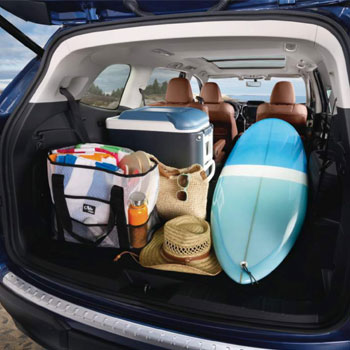
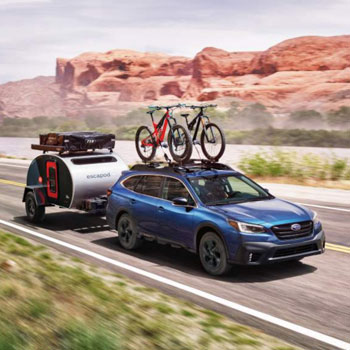
Subaru Ascent
The Ascent has a 17.6-degree approach angle, a 21.8-degree departure angle and an 18.2-degree breakover angle.
X-MODE is standard on all Ascent trim levels.
Cargo volume is up to 17.8 cubic feet with the second and third rows raised, up to 47.5 cubic feet with the third row stowed and up to 86.5 cubic feet with all of the seats lowered. The maximum floor length with all the seats lowered is 82.5 inches. The Ascent can support a tent and occupants with a total weight of 700 pounds.
Subaru Outback
The Outback has an 18.6-degree approach angle, a 21.7-degree departure angle and a 19.4-degree breakover angle.
Single-mode X-MODE is standard on Base, Premium, Limited, Touring, Limited XT and Touring XT models. Dual-function X-MODE – with even more capability on slippery road conditions and inclines – is standard and exclusive to the Onyx Edition XT.
Cargo volume is 32.5 cubic feet with the rear seats raised and 75.7 with the seatbacks lowered. The maximum cargo length with the seats lowered is 75 inches.
FAQ
Q: Where should I camp?
A: According to Kampnik, there are some 13,000 public campgrounds in North America. If you’re just getting started camping, they’re a good option to start with because they offer amenities that can make an early camping trip less of an undertaking. These campgrounds range from privately owned campgrounds to state parks and national parks all over America.
Q: What equipment do I need?
A: Aside from the tent and sleeping bags, you can pretty quickly blow the cost of a weekend in a boutique hotel buying all kinds of camping gear, from lanterns to stoves to reclining camp stools. If it’s your first time out, you might try hitting up your friends and family to borrow some gear, but one thing we researched when we took our trip in the Subaru Ascent to Kohler-Andrae State Park in Wisconsin was renting some gear.
Select REI locations offer full camping packages for a reasonable fee either with or without a tent. You can rent equipment for a simple overnight hike to a week in the woods with a full kitchen and bear canisters.
Q: I’m interested in rooftop camping. How do I learn the capacity of my roof rails?
A: Your Subaru Owner’s Manual has information on the roof rail capacity, including additional information on weight distribution of the tent and the people sleeping inside.
1 Roof tents may be used in certain conditions. Contact your Retailer for important safety information and requirements.
2 Compatible smartphone and application required. For applications to operate, latest version of each application required. Data provided by smartphone is displayed on head unit screen. Some state laws prohibit the operation of handheld electronic devices while operating a vehicle. Smartphone apps should only be launched when vehicle is safely parked. Your wireless carrier’s rates may apply.


